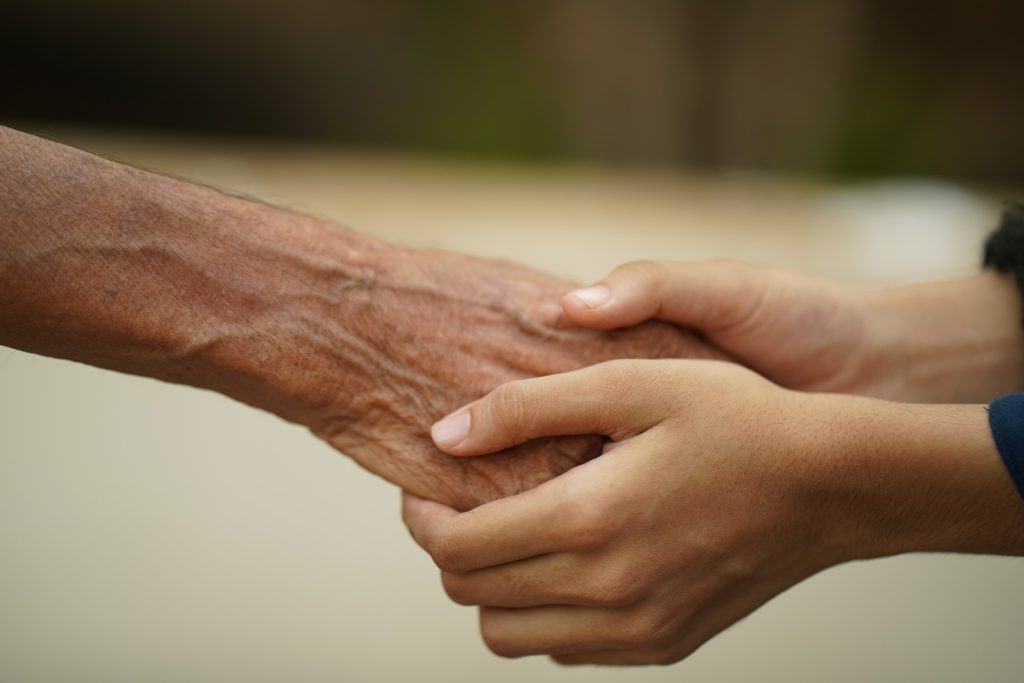Compassion
This post is one in a series of reflections in response to the spiritual practices in Beth A. Richardson’s book Walking in the Wilderness: Seeking God During Lent.
- Week 1: Being Present
- Week 2: Lament
- Week 3: Lectio Divina
- Week 4: Trust
Our spiritual practice this week was compassion. Beth A. Richardson shares: “In Hebrew, the word translated as compassion comes from the root word rehem, meaning ‘womb.’ When we have compassion for another, we have the sort of love that a parent has for a child.” This week, my child taught me about compassion.
During worship last Sunday, Pastor Jeff led us in Beth Richardson’s loving-kindness meditation (Walking in the Wilderness, p. 90-91). It was the third time I had practiced it that day: once on my own, and then in each worship service, of which this was the second. Our 8-year-old daughter was sitting next to me. When Pastor Jeff gave the instructions to “pray fro yourself,” she was silent, like everyone else. When we were guided to “pray for a good friend,” she whispered to me who she was paying for. It was distracting, but it told me she was participating, and I smiled. When we heard the instructions to “pray for someone for whom you do not have strong feelings, such as an acquaintance” she again whispered to me who she was praying for. And when we were told to “pray for someone you dislike,” she whispered the name of a child at school who has been teasing her. I opened my eyes and looked at her, realizing that I, too, needed to pray for this child. I have had so much compassion for my own child and her emotional responses to how she is treated by this classmate, but I realized I have not been particularly compassionate toward this other child. I had not prayed for this child, and I needed to. My daughter led me to my growing edge, to this place of conviction, to an area where I have not been extending compassion in my life.
I have continued to pray for this child throughout my week, and not just for this child, but for my own feelings toward them. In the past, I have been filled with frustration and confusion and sadness about their behavior. I have prayed for my daughter to manage the situation as best she can, with the help of her teacher. But until this week, I have not prayed for this other child, the one who probably needs compassion more than I will ever know. This week, I have gained a new understanding of compassion and praying for our enemies. I am grateful that God has worked through my child to teach me, to lead me, so that I can continue to grow in compassionate love toward others, loving as Christ loved.

But here’s the thing: the blessing exercise leads us first to pray for and bless ourselves, then to pray for and bless a good friend, then an acquaintance, then someone we dislike. There is wisdom in this gradual shift of focus from ourselves to our loved ones to those we don’t know well to those we dislike. It enables us to care for ourselves, have compassion for ourselves first, rather than forgetting about our own needs as we focus on the rest of the world. And then it enables us to be open to the Spirit’s leading. Each time I practice this loving-kindness meditation, different people come to mind. Praying into compassion has helped me to extend my prayer practice into practicing compassion this week, for myself, as well as others.
Beth A. Richardson asks, “How do we find the healthy balance of caring that lies somewhere between compassion and numbing as we witness so much crisis and turmoil?” An excellent question to consider, and to ponder in prayer. I think it is different for each of us, and at least for me, I know the “balance” looks different each day. But I was reminded this week that it begins with prayer. Let us pray:
Bless all people, everywhere, with your love.
Bless all people with your healing.
Bless all people with your peace. Amen.